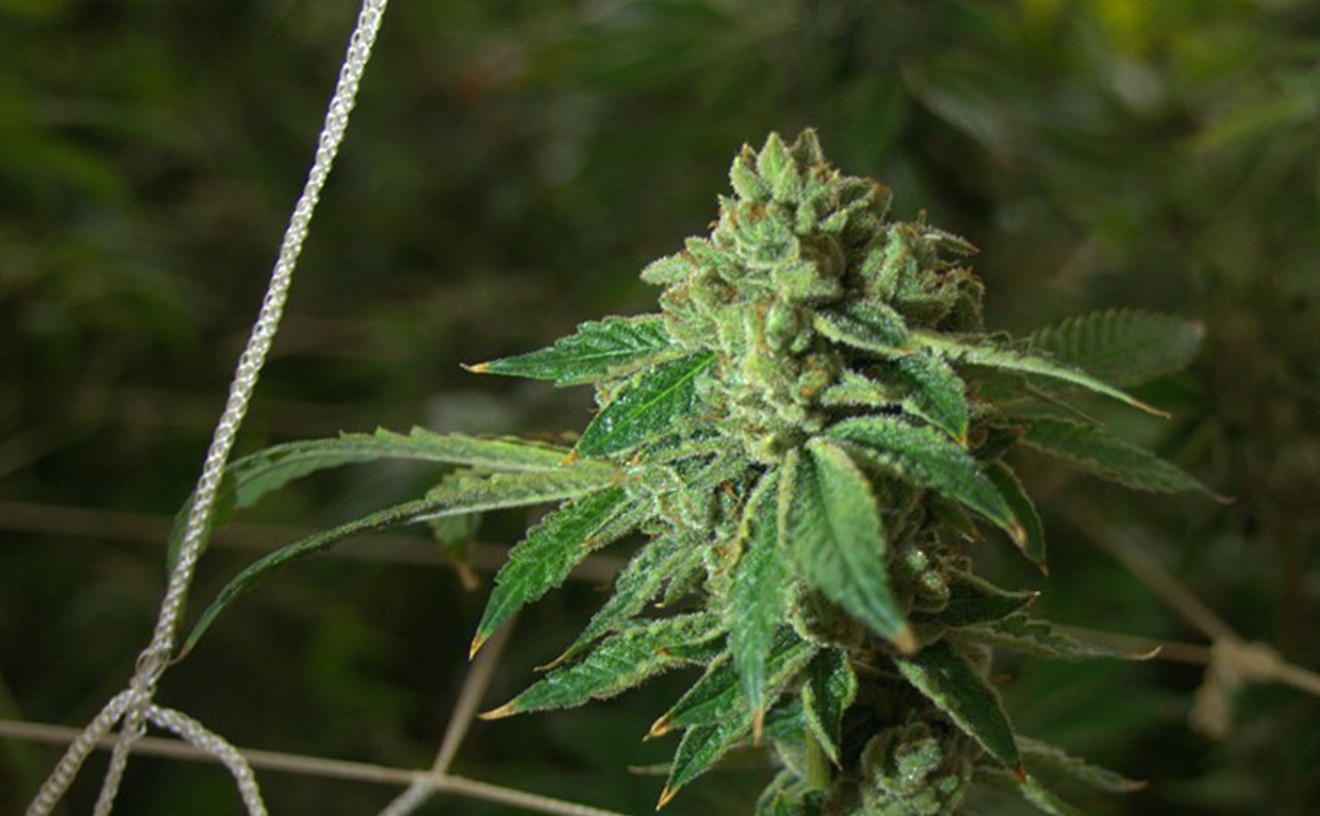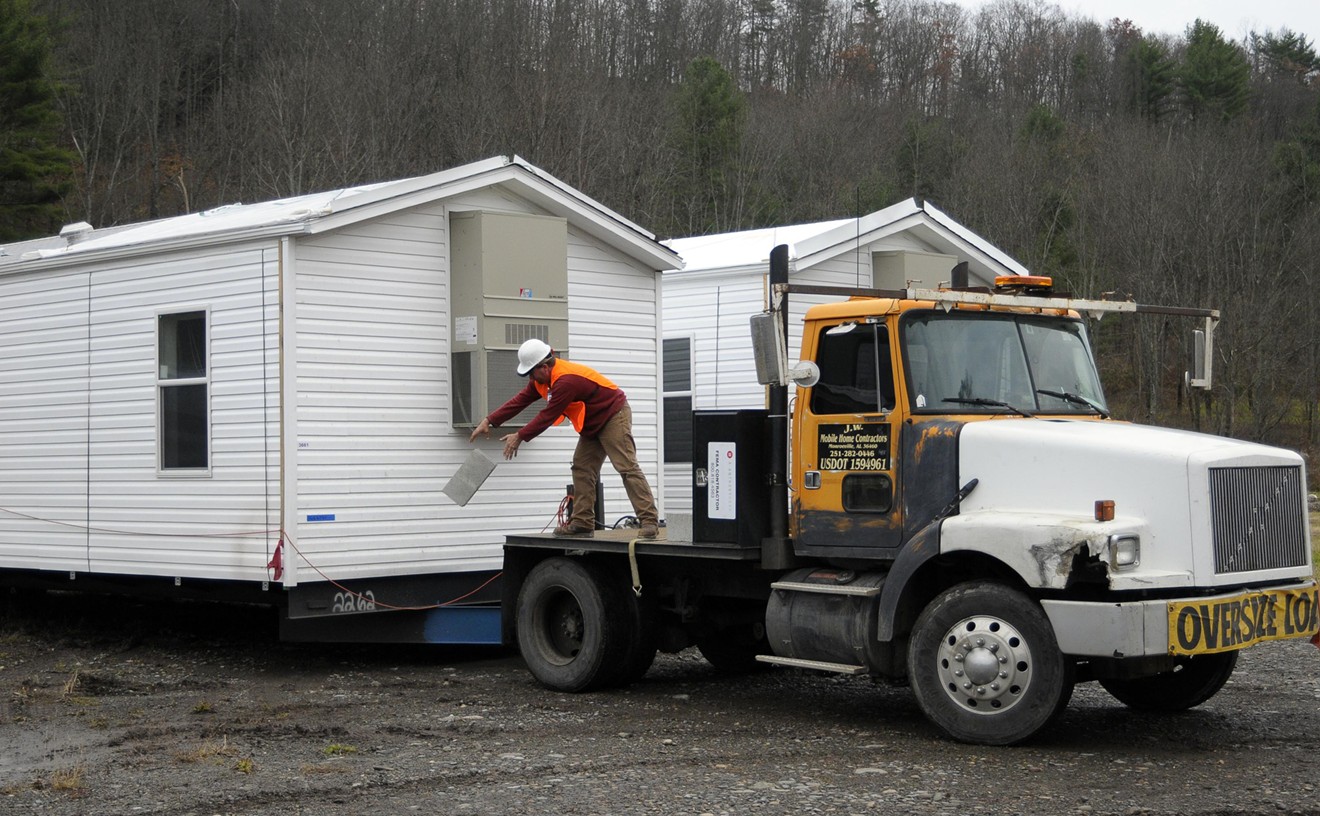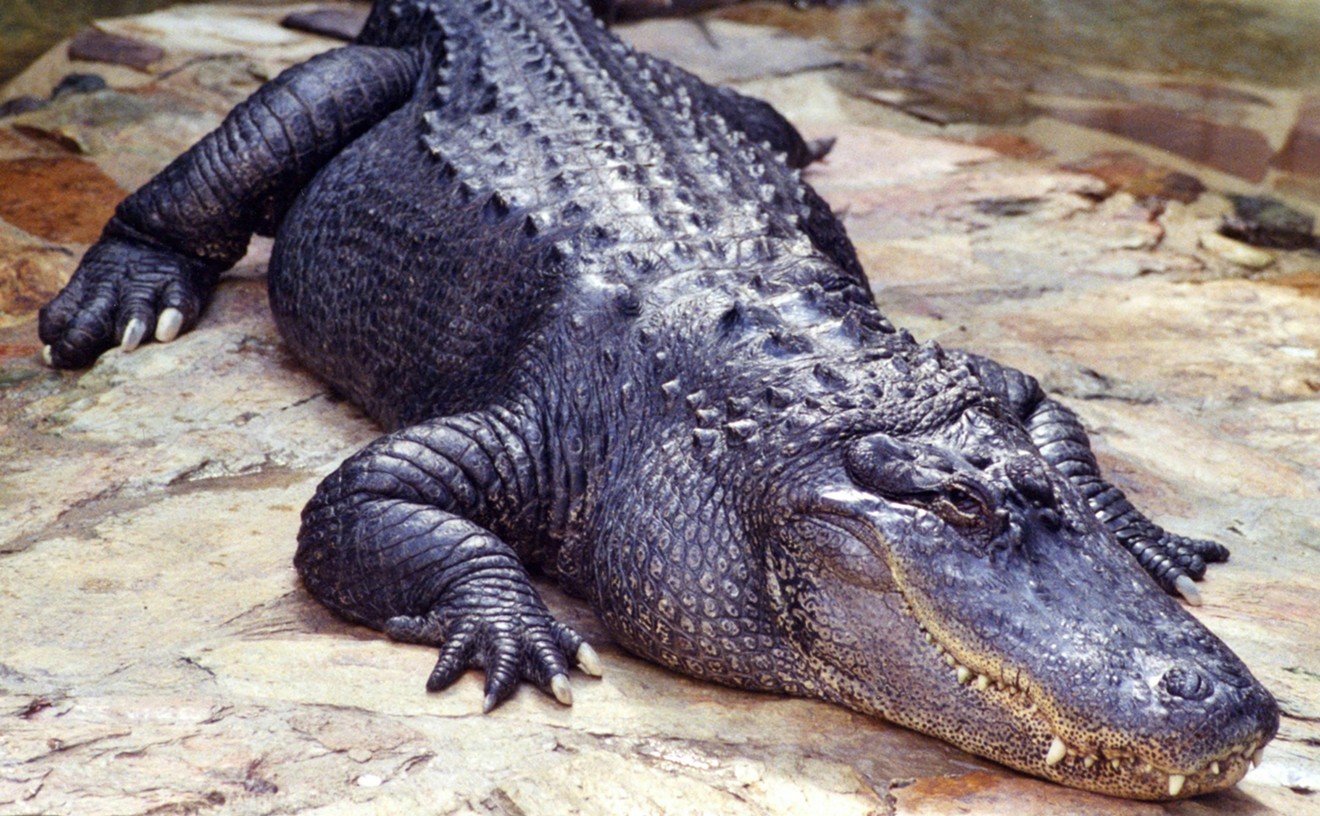Design Trinity Park for Nature First, Us Later
Let’s say, just for grins, they don’t wind up building that six-lane expressway along the Trinity River in downtown Dallas. Guess what. All of a sudden we’re looking at an adventure that could put Dallas at the global forefront of the most crucial issue facing mankind in the 21st century...
By Jim Schutze
April 27, 2016
[
{
"name": "Air - MediumRectangle - Inline Content - Mobile Display Size",
"component": "18855504",
"insertPoint": "2",
"requiredCountToDisplay": "2"
},{
"name": "Editor Picks",
"component": "17105533",
"insertPoint": "4",
"requiredCountToDisplay": "1"
},{
"name": "Inline Links",
"component": "18349797",
"insertPoint": "8th",
"startingPoint": 8,
"requiredCountToDisplay": "7",
"maxInsertions": 25
},{
"name": "Air - MediumRectangle - Combo - Inline Content",
"component": "17105532",
"insertPoint": "8th",
"startingPoint": 8,
"requiredCountToDisplay": "7",
"maxInsertions": 25
},{
"name": "Inline Links",
"component": "18349797",
"insertPoint": "8th",
"startingPoint": 12,
"requiredCountToDisplay": "11",
"maxInsertions": 25
},{
"name": "Air - Leaderboard Tower - Combo - Inline Content",
"component": "17105535",
"insertPoint": "8th",
"startingPoint": 12,
"requiredCountToDisplay": "11",
"maxInsertions": 25
}
]
Let’s say, just for grins, they don’t wind up building that six-lane expressway along the Trinity River in downtown Dallas. Guess what. All of a sudden we’re looking at an adventure that could put Dallas at the global forefront of the most crucial issue facing mankind in the 21st century — how man comes to peace with the planet.
No, wait. Don’t blow me off yet. Think about this. If that highway doesn’t go down, Dallas will have 10,000 acres of land stretching for 20 miles through the city as a blank slate.
Blank slate for what, you say? More nature trails and fake whitewater features and soccer fields? So big what? As a natural area, it’s an ugly sister anyway — flat, sere, boring, buggy. If we’re really going to invest in more park stuff, why not put it somewhere closer to where people might want to actually go use it?
Good. Good points. We’re not disagreeing yet. Yes, ugly sister. Yes, boring. But think for a second. Those are the reasons why it’s a blank slate, why nothing is there. The slate is the whole opportunity.
Parks in pretty places are easy. The world has lots of those. In fact most of the pretty land anywhere near big cities is pretty much parked up already, crisscrossed by trails, roads, canoe launches — all the man-made features that are designed to bring man into his park.
The great experiment spread out before Dallas now is about the park and about man — but before man goes into his park. It’s a rare window, maybe the only one on Earth at the moment, in which we could engage a whole range of overlapping questions of morality, science and survival.
I lost you? Too much? Wait. Go back. Ten thousand acres in a city. That’s not insignificant, is it? And think about this. Since Charles Darwin published The Voyage of the Beagle in 1839, we have known that life is married to land.
Darwin’s theory was that finches scattered and separated from each other across islands in the Galapagos archipelago developed slight differences or idiosyncrasies driven by their need to adapt to the peculiar conditions of each island. His “survival of the fittest” theory is still respected by science.
You knew that. I have to do this anyway. It’s a newspaper. Be patient.
Now science knows more. Darwin’s ideas now must coexist with our knowledge of genetic drift. Part of a finch population can get killed by plain bad luck, an ice storm or something, and from that point forward the genetic makeup of the finch population will drift more toward the characteristics of the survivors and away from the perished finches.
Recent years have seen the development of an exciting new field that still hasn’t settled on a name, but the one I will use here arbitrarily is biogenetic geography. I think of it as the man-made Galapagolizing of nature. This is science looking at the ways in which flora and fauna are changed when something happens to divide or isolate a population — highways are a big one — so that plants and animals may have a smaller genetic pool in which to reproduce.
It’s not good. Imagine elephants in Africa or grizzly bears in Montana and then start playing the “Dueling Banjos” theme from Deliverance in your head. All-cousin towns have the same effect on all of us, but there are things that can be done to mitigate.
The public television science series Nova recently broadcast a documentary called Wildways about efforts all over the globe to create tunnels and overpasses to reconnect genetic pools that have been isolated by highways or other human activity. The show is fascinating and uplifting, because it shows human beings going to great effort and expense to heal the wounds we have inflicted on the planet.
But it also conveys a sobering undercurrent. Either we do this, we get it done, or none of the wonderful creatures of the wilderness can survive. Once they are isolated into small populations, they can only dwindle. In order to thrive, they must roam, and in order to roam on this particular planet, they need overpasses.
Another equally exciting new field is coming along at the same time, dealing with intricate communications systems between forest plants — what scientists have called “the Internet of plants. The BBC broadcast a special about this two years ago, explaining how communities of fungus in the soil called mycorrhiza serve as a transfer network for both information and nutrition between trees and other plants.
Weird, yes, I know, plants talking to each other. One of the conclusions scientists have come to is that trees, for example, are less like individual creatures than a great network comprising one creature with many branches, kind of like the CVS drugstores of nature.
I can’t rush right on by this point without making at least a quick shout-out to my friend and hero Howard Garrett, “The Dirt Doctor,” Dallas’ own organics guru radio host who was talking about mycorrhiza and plant communications in the soil eight years ago, when most of the scientists at Texas A&M still thought it was superstition. Garrett is an example of a community of naturalists and environmentalists right here in Dallas who have made and will continue to make significant contributions.
And that takes me back to 10,000 acres. If the early decisions are made by people who are not naturalists and not environmentalists, the reflexive tendency will be to begin right off the bat thinking about how to get man out onto his land. But think about some of what we have just been discussing.
We know that man, with his roads and other construction, can kill the very treasure he seeks to experience merely by planting his foot too hard. Roads separate and isolate. So can anything else we build.
So is the answer here going to be an absolute proscription of human activity, a bell-jar wilderness like a giant biosphere in the center of the city? Sure, it could be, but if Dallas did that with its 10,000 acres it would break no new ground. We already know how to protect nature by isolating it.
I would also suggest that isolation is not feasible politically or pragmatically in the long run, because who’s going to pay for it? Not Greg Abbott. And actually I hope not me, either.
So the experiment is this. Contemplating our vast blank slate and knowing what we know, what if man were to exercise an ounce of self-control first?
Before we rush out there headlong and start building things, we could pause just long enough to go to the wildlife biologists and the botanists and whatever the rest of them are called and ask a few questions.
What have we got? Who lives in our 10,000 acres? What lives there? How is it all connected? Which connections are most important? What is the water out there, the dirt, the air? Tell us how it works. Tell us how not to step too hard and harm it. Tell us what we can do to make it work better.
And then let us back in. Yes. Tell us how we can come back into our 10,000 acres in ways that will create a happy marriage between our city and its natural setting. To think of this in terms of design, we would be designing to nature first, then designing man back in.
But not man first. Nature first. Man second. And that’s an interesting one, isn’t it? It feels sort of moral. Unfortunately, my own lifelong background as a reporter has not equipped me very well to speak authoritatively about morals, so I will have to leave that department to more qualified minds, but I can tell that there is something moral going on there.
If we were to take our blank slate, our 10,000 acres and approach it in this way, I believe people would be coming from all over the world to see how we did it. And, oh man, guess what I just thought of? Yikes.
When I came to Dallas 200 years ago from Detroit, there was this corny origin myth that local boosters were always reciting — how Dallas had no “reason for being,” no mountains, no sea, but it prospered anyway because of the sheer dad-gum by-golly true-grit chutzpah of its founders. I always thought, “Oh, great, a city of used car salesmen.”
You have to understand, I was kind of a young shit. What if I missed the point? What if the real point was that human moral commitment, however disguised it may be beneath layers of cornball gimcrackery, really is ultimately what makes the world go 'round?
Not saying I would agree with that either, because, as I told you already, lifelong reporter, morals not wheelhouse, not sure opinion needed.
Back to the 10,000 acres. Whatever that moral thing may be about man exercising self-restraint, if it is the beginning and the guide-star for this park, I wonder if in some strange way we actually may get back to that origin myth the city loves so much.
This park has every reason to not be. It has every reason to be ruined. The only thing that can lift it up to grandeur instead will be our will to get it done.
And not to get too off the charts here, but if that’s the answer here in Dallas, is it not at least a part of the answer everywhere in the world? Of course, just watch: We’ll do it, and then Fort Worth will claim they thought it up. Better start cranking out those T-shirts now. Even if we get all natural, this is still going to be Dallas.
BEFORE YOU GO...
Can you help us continue to share our stories? Since the beginning, Dallas Observer has been defined as the free, independent voice of Dallas — and we'd like to keep it that way. Our members allow us to continue offering readers access to our incisive coverage of local news, food, and culture with no paywalls.
Can you help us continue to share our stories? Since the beginning, Dallas Observer has been defined as the free, independent voice of Dallas — and we'd like to keep it that way. Our members allow us to continue offering readers access to our incisive coverage of local news, food, and culture with no paywalls.
Jim Schutze has been the city columnist for the Dallas Observer since 1998. He has been a recipient of the Association of Alternative Newsweeklies’ national award for best commentary and Lincoln University’s national Unity Award for writing on civil rights and racial issues. In 2011 he was admitted to the Texas Institute of Letters.
Contact:
Jim Schutze


Newsletter Sign Up
Enter your name, zip code, and email
I agree to the Terms of Service and
Privacy Policy
Sign up for our newsletters
Get the latest
News,
free stuff and more!
Trending
Use of this website constitutes acceptance of our
terms of use,
our cookies policy, and our
privacy policy
The Dallas Observer may earn a portion of sales from products & services purchased through links on our site from our
affiliate partners.
©2024
Dallas Observer, LP. All rights reserved.
Do Not Sell or Share My Information
Do Not Sell or Share My Information









